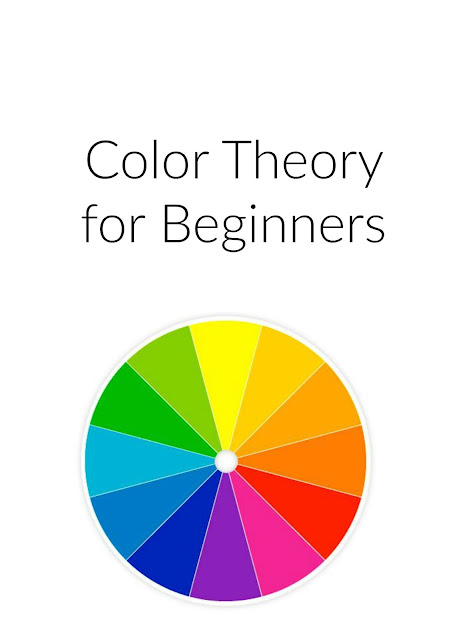Color Theory for Beginners
Don't even think about skipping over this post. I know you thought about it (or if you didn't, good for you). Color theory is something I think everyone should know, whether or not you create art. It can be used for so much more than that. Color theory is also useful for writers, jewelry makers, and so much more. Don't be intimidated, it isn't as hard as it sounds. Ready? Let's dive in.
What and Why
What exactly is color theory, you may ask? It is basically a guide to colors and how to mix and combine them. That's not so bad, right?
The second question you're probably asking is why you should know anything about color theory. One, because it's a useful skill for anybody, in my humble opinion. Two, if you ever plan to do anything with color, whether it's designing a book cover, making some art, coloring in one of those awesome adult coloring pages, or even picking your clothes, color theory is helpful.
The color wheel
In color theory, the color wheel is your best friend. It has all the colors laid out in relation to each other. Here it is.
The color wheel has three basic types of colors on it. First are the primary colors, which you probably learned about in school. Red, yellow, and blue. Every other color, except black and white, are made from these three colors. Below is an illustration pointing out the primary colors.
Last are the tertiary colors. These come from mixing the primary and secondary colors. See how they all work with each other? Isn't it cool? Tertiary colors include red-violet, yellow-orange, blue-green, yellow-green, blue-violet, and red-orange.
But what about black and white? They aren't part of the color wheel. Black and white are used in color theory, as you'll see in a moment, but there's a lot of debate about whether they are actually colors.
Combination
We already talked about how the color wheel is made by combining colors with each other. Now we're going to discuss shades, tones, and tints. Each of these are used to make more versions of one color.
A shade is when you add black to a color, thus darkening it while maintaining its original hue. (A hue just means color. But doesn't it sound fancy?) You don't need to add a lot of black to a color to quickly darken and intensify it.
A tone is when you add grey, or back and white, to a hue. Depending on how you combine the colors, it may get brighter or lighter than the normal hue.
And finally, a tint is when you add white to a hue. This makes a pale color that often is referred to as pastel. Tints are light and airy.
Using Color
Now for the most important part of color theory. Actually using what you've learned. There are many ways to use color, and most of us just slap things together and hope it looks good. After this, you'll be much more refined.
When choosing colors for anything, you want to choose things that go together and look good. (Unless you want to have something clash, which you might.) The color wheel is extremely useful in finding colors that go together. Here are some of the ways to find.
Choose a color, let's say green, and go straight across from it. In this case that would be red. Those two colors are called complimentary colors. Use these when you want something to pop.
Monochrome colors are different hues of the same color. So brick red, red, and red-orange would be monochrome colors.
Analogous colors are three colors next to each other on a color wheel. In the image below that's blue-violet, violet, and red-violet. These types of colors are very harmonious.
If you put a triangle on the color wheel, the colors at each point would be a triadic color. It will probably be all three primary, secondary, or tertiary colors. In our example, it's the secondaries.
I know that's a lot of information but congratulations on making it this far. I still have so much I want to discuss about color and how to use it, I'm going to have to do another post next month, so stay tuned. Now you have a basic grasp on color theory and the first step on the road to using color well.
Did you learn something in this post? What color is your favorite? (Mine's red.) Let me know in the comments.











Comments
Post a Comment